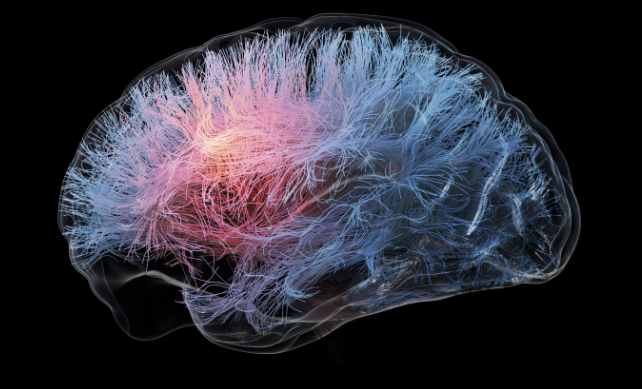The fixed ebb and move of hormones that information the menstrual cycle do not simply have an effect on reproductive anatomy. In addition they reshape the mind, and a research has given us perception into how this occurs.
Led by neuroscientists Elizabeth Rizor and Viktoriya Babenko of the College of California Santa Barbara, a workforce of researchers tracked 30 ladies who menstruate over their cycles, documenting intimately the structural modifications that happen within the mind as hormonal profiles fluctuate.
The outcomes, revealed in a peer-reviewed research in July this yr, recommend that structural modifications within the mind throughout menstruation is probably not restricted to these areas related to the menstrual cycle.
“These outcomes are the primary to report simultaneous brain-wide modifications in human white matter microstructure and cortical thickness coinciding with menstrual cycle-driven hormone rhythms,” the researchers wrote.
“Sturdy brain-hormone interplay results is probably not restricted to classically identified hypothalamic-pituitary-gonadal-axis (HPG-axis) receptor-dense areas.”
Individuals who menstruate will expertise some 450 or so durations in the course of the course of their lifetimes, so it could be good to know the completely different results they’ll have on the physique, actually.
Nonetheless, though it’s one thing that occurs to half the world’s inhabitants for half their lives, analysis has been considerably missing. Who is aware of why. Whole thriller. Critically.
Many of the analysis on the hormonal impact on the mind has been targeted on mind communication throughout cognitive duties, not the precise constructions themselves.
“Cyclic fluctuations in HPG-axis hormones exert highly effective behavioral, structural, and practical results by way of actions on the mammalian central nervous system,” Rizor, Babenko, and their workforce famous. “But, little or no is understood about how these fluctuations alter the structural nodes and data highways of the human mind.”
The microstructure of white matter – the fatty community of neuronal fibers that switch data between areas of grey matter – has been discovered to vary with hormonal shifts, together with puberty, oral contraception use, gender-affirming hormone remedy, and post-menopausal estrogen remedy.

To deal with the menstruation hole in our understanding, the workforce took MRI scans of their topics throughout three menstrual phases: menses, ovulation, and mid-luteal. On the time of every of those scans, the researchers additionally measured the individuals’ hormone ranges.
The outcomes confirmed that, as hormones fluctuate, grey and white matter volumes change too, as does the amount of cerebrospinal fluid.
Specifically, simply earlier than ovulation, when the hormones 17β-estradiol and luteinizing hormone rise, the brains of the individuals confirmed white matter modifications suggesting quicker data switch.
Follicle-stimulating hormone, which rises earlier than ovulation, and helps stimulate the ovary follicles, was related to thicker grey matter.
Progesterone, which rises after ovulation, was related to elevated tissue and decreased cerebrospinal fluid quantity.
What this implies for the individual driving the mind is unknown, however the analysis lays the groundwork for future research, and maybe understanding the causes of uncommon however extreme period-related psychological well being issues.
“Though we don’t at the moment report practical penalties or correlates of structural mind modifications, our findings could have implications for hormone-driven alterations in habits and cognition,” the researchers wrote.
“Investigation of brain-hormone relationships throughout networks is critical to know human nervous system functioning each day, throughout hormone transition durations, and throughout the human lifespan.”
The findings are reported in Human Mind Mapping.
An earlier model of this text was revealed in October 2023.





